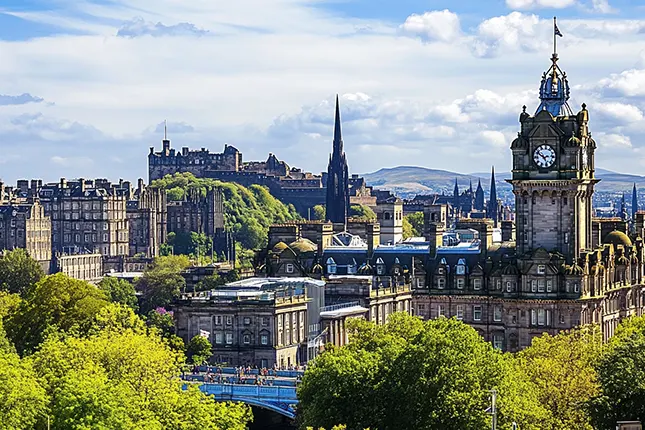Edinburgh is the captivating capital of Scotland, home to the Scottish Parliament as well as a number of prestigious universities.
With its stunning medieval architecture, ancient history, and breathtaking landscapes, it’s no wonder so many people dream of making Scotland’s capital their home.
However, living in Edinburgh is more than just strolling down the Royal Mile or taking in the view from Arthur’s Seat, it’s about understanding the city’s unique lifestyle, adapting to its unpredictable weather, and immersing yourself in its rich cultural tapestry.
There are simply so many wonderful things to explore in the city but this article highlighting “45 Awesome Facts About Edinburgh” is a great place to start.
It offers an intriguing look into the city’s treasure trove of quirky trivia and unusual information.
Before you pack your bags and book your one-way ticket, you should know some of the essential things needed to thrive in this enchanting city.
From navigating the bustling festival season to finding the perfect home, our comprehensive guide will prepare you for life in one of Europe’s most charming and historically rich cities.
Whether you’re drawn by the promise of a top-tier university, a new job opportunity, or the sheer allure of Edinburgh’s cobbled streets and hidden closes, this article will provide you with the insights and tips you need to make your transition as smooth as possible.
Join us as we uncover the 10 key things you need to know before living in Edinburgh, from the practical to the delightful, these insights will help you feel at home in no time.
1. The Weather: Expect the Unexpected
Edinburgh’s weather is notoriously unpredictable. You can experience sun, rain, wind, and fog all in one day.
Summers are mild, rarely exceeding 17°C, while winters are generally above freezing but often damp.
Layering is key to staying comfortable, and always keep an umbrella handy.
Despite the frequent rain, when the sun shines, locals make the most of it by flocking to parks and outdoor cafes.
2. The Festivals: A Cultural Extravaganza

Edinburgh is world-famous for its range of wonderful festivals, hosting twelve major events annually.
The Edinburgh Fringe Festival, the largest international arts festival, doubles the city’s population each August, with millions of people flocking to the city to watch the shows – it is a wonderful event that is celebrated by locals and visitors alike.
Whilst this is certainly a busy period, it is also a very exciting time for the city, which means crowded streets and higher accommodation prices.
Plan ahead if you’re moving during this period and embrace the opportunity to enjoy a plethora of performances and cultural events when you have settled down in the city!
3. The Cost of Living: Manage Your Budget

Living in Edinburgh, like all major cities, can be a costly affair.
Rent for a one-bedroom flat ranges from £650 to £1,000 per month, and utilities and council tax are additional expenses that you will have to consider.
However, it’s still far cheaper than other large cities in the UK such as London.
Groceries and dining out can also be expensive depending on where you like to shop and eat, so budgeting will be crucial if you have little cash to spend.
One top tip to consider is living further from the city centre to find more affordable housing options, whilst you may have to travel a little further to reach the most popular spots you are sure to save some money along the way.
4. Finding Accommodation: Be Prepared for a Challenge

Renting before you buy is an excellent choice for many, allowing you to get a taste of an area before you make the big decision to purchase a property.
Give yourself plenty of time to explore and find the location that makes you feel happiest and is the most convenient for your needs.
Securing a flat in Edinburgh can be challenging at certain times of the year, especially during the Fringe Festival, which is usually held in August.
Websites like Zoopla and Rightmove are good resources from which to start your search for a possible rental home.
As for cost, you can expect to pay from £850pcm for a one-bedroom flat, and £1100pcm for a two-bed property.
Sharing accommodation is another option and could help to cut your costs, with room rentals starting from £600pcm.
5. Job Market: Opportunities Abound

Finding a job in Edinburgh is generally a very reasonable task, there are plenty of sectors looking to hire people across a range of industries, although you may need to do a little digging to find your dream role.
Edinburgh, being the capital of Scotland, is the second-largest financial centre in the UK after London.
The city is home to a variety of major banks, insurance companies, and investment firms. Institutions like the Royal Bank of Scotland, Standard Life, and Scottish Widows are significant employers.
The tech industry in Edinburgh is booming, with a growing number of startups and established companies. The city’s Silicon Glen is a hub for software development, data analytics, and fintech.
The education sector is another major employer, with prestigious institutions like the University of Edinburgh, Heriot-Watt University, and Edinburgh Napier University driving research and development across various fields.
Tourism is another cornerstone of Edinburgh’s economy, with this sector providing ample hospitality, event management, and retail job opportunities across a range of experience levels.
The presence of the Scottish Parliament and various government agencies makes the public sector yet another big employer in Edinburgh.
With time, patience and planning, there is no reason why you can find your ideal job in Edinburgh!
6. Transportation: Efficient and Accessible
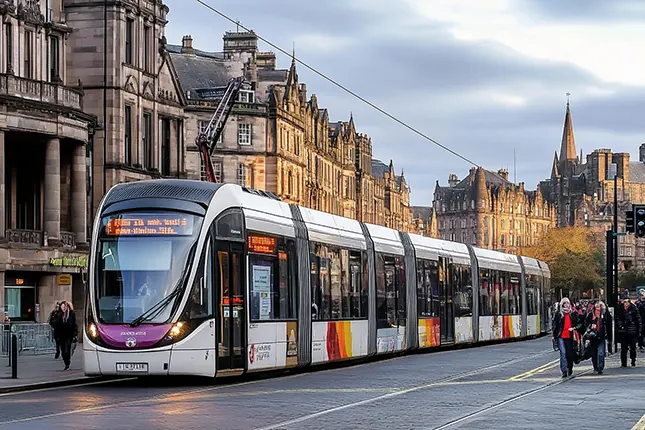
Edinburgh is a major transport hub in east central Scotland.
It is at the centre of a multimodal transport network, with road, rail, and air communications connecting the city with the rest of Scotland and internationally.
Several bus companies run through the heart of the city, but the biggest providers are Lothian and First.
A monthly bus pass in the city costs around £60, making it a cost-effective option for getting around.
Services even run 24 hours a day and are frequent.
The city is also very walkable, and cycling has become increasingly popular. A network of traffic-free cycle routes allows safe access to most parts of the city.
For trips further afield, trains from Waverley and Haymarket stations offer great connections to other major UK cities.
Heading abroad? No problem!
Edinburgh Airport is Scotland’s busiest airport and the principal international gateway to the capital, handling over 14.7 million passengers annually to over 150 destinations worldwide.
The Edinburgh Trams is a light rail line connecting Edinburgh Airport on the city’s western edge with Haymarket, Princes Street, St Andrew Square and York Place in the city centre.
Driving in the capital is on the more difficult side, you will quickly find that the city’s main roads are often quite congested.
However, Edinburgh itself is the hub of the A-road numbering system within Scotland, and many radial routes lead into and out of the city.
The Edinburgh City Bypass (A720) skirts the city’s southern fringes and is one of the main trunk roads in east central Scotland. It links vitally important routes such as the M8, the main route west to Glasgow, the A1, one of the two primary routes south from Scotland to England, and the M9 to Stirling.
7. Green Spaces: Nature in the City
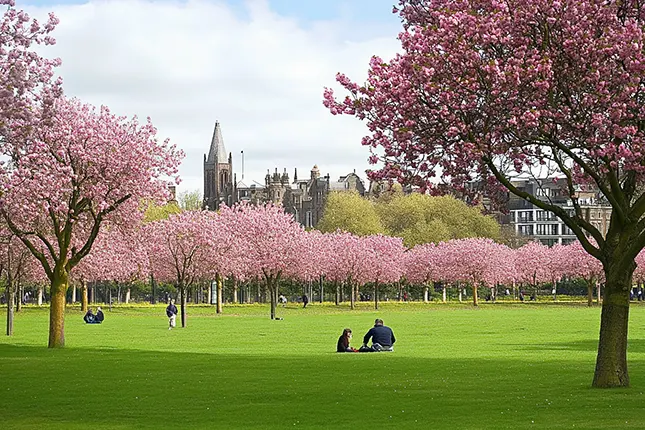
Despite being a bustling and largely urban city, Edinburgh is still renowned for its numerous green spaces that offer residents and visitors a refreshing escape from the city’s hustle and bustle.
The Meadows, Holyrood Park, Inverleith Park and the Royal Botanic Gardens are just a few spots where you can enjoy nature.
These areas are the perfect spots for picnics, jogging, or simply relaxing on a sunny summer day if the weather allows!
Living close to these parks can greatly enhance your living experience and the value of your home in Edinburgh.
8. Food and Drink: A Culinary Adventure
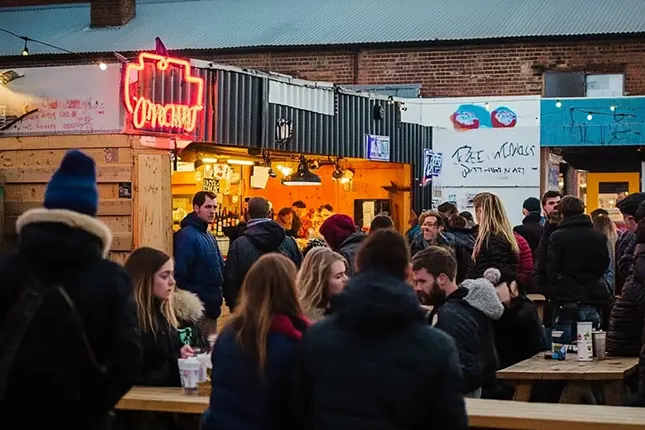
Edinburgh offers a diverse food scene, from traditional Scottish dishes like haggis and Cullen skink to a variety of international cuisines.
The city has excellent restaurants, cafes, and food markets.
The Pitt Street food market is popular for delicious street food and live music, perfect for exploring the wonderful streets of the capital.
A new wave of health-conscious restaurants is springing up in the capital, with Hula Eatery being a fine example!
Originally a healthy juice bar, it now serves a range of nutritious, wholesome food freshly made daily.
High-end dining at award-winning restaurants is also available across the city. If you are new to the area be sure to try Condita.
This Michelin-starred restaurant has just six tables, and the food is not just incredibly tasty but is also an art form.
Don’t miss trying local favourites like Arbroath Smokies, these are traditional Scottish delicacies made from haddock that are hot smoked over hardwood, typically oak or beech, in the town of Arbroath, Angus, on the east coast of Scotland.
Cranachan is another popular dish but a dessert.
It is often enjoyed on special occasions such as Burns Night and Hogmanay. It is a delightful and simple dish that highlights some of Scotland’s finest ingredients.
Foodies have so much to discover when moving to Edinburgh.
9. Edinburgh’s Dynamic Cultural Scene
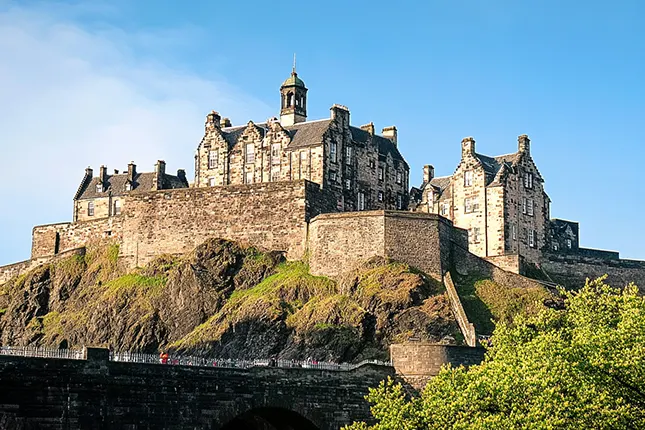
Edinburgh is a city that is truly packed with culture and luckily, its compact size means ut is easy to get around on foot, making it so easy to access all of these wonderful cultural delights.
You may not have known that the whole city is a UNESCO World Heritage Site with its Georgian and Victorian architecture and winding medieval streets!
The iconic Edinburgh Castle, dominating the skyline, is a major attraction and centre point of the culture and skyline, but the city’s historical offerings don’t stop there!
The National Trust for Scotland and Historic Scotland manage various other properties across the city, inviting visitors to explore Edinburgh’s rich heritage.
Edinburgh’s cultural scene is thriving, with numerous theatres, music venues, and galleries to suit all tastes.
Venues like the Edinburgh Playhouse, Usher Hall, and the Queen’s Hall offer a range of performances, from musicals to classical concerts.
Some of Scotland’s most important national galleries are situated within a short stroll of the city centre, such as the Scottish National Gallery of Modern Art and the Museum of Scotland.
Edinburgh’s wonderfully unique cultural scene truly has something for everyone to enjoy.
10. The Locals: A Friendly and Welcoming Atmosphere

Edinburgh’s residents are known for their friendliness and hospitality, in fact, the Lonely Planet travel guide praises Scots for their welcoming nature and helpfulness towards visitors!
The city has a cosmopolitan feel, with a mix of locals and expats, meaning you are sure to feel right at home no matter where you are moving from.
Engaging with the community through local events, clubs, and social activities is a fantastic way to help you settle in quickly and make new friends in your new home city.
Top tip, the Scottish are proud of their culture, so showing interest and respect will go a long way!
Moving to Edinburgh can be an exciting adventure, full of rich cultural experiences and beautiful scenery.
By understanding these key aspects of life in the city, you can prepare yourself for a smooth transition and fully embrace all that Edinburgh has to offer.
Thinking of Moving to Edinburgh Soon?

It is an appealing choice for those considering a move to Scotland.
However, before you move, planning how to transport your belongings efficiently is essential.
For over a decade, Moray Firth Moving & Storage has built a great reputation for providing our customers with an industry-leading removals service.
Nestled in the wonderful Highlands of Scotland, the Moray Firth Moving & Storage team is dedicated to making your move seamless and stress-free at every step.
If you’re planning a move, whether it’s for your home or business, or if you need some furniture transported or stored, look no further.
As members of the esteemed British Association of Removers (BAR), we offer the reassurance of a reputable, professional, and financially protected service.
This membership ensures high standards and reliability, giving you peace of mind during your move.
Contacting us is easy and convenient.
Whether you prefer calling directly or submitting an online quotation form, we provide a no-obligation quote promptly, bringing you one step closer to settling into your new Edinburgh home.
Embrace the excitement of moving to Edinburgh with the confidence that your transition will be smooth and well-managed. This will allow you to focus on enjoying all that this incredible city has to offer.
Q&A’s About Edinburgh
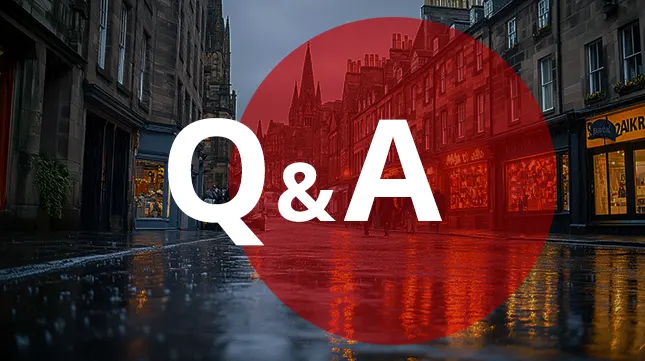
Q1: What are the must-see attractions in Edinburgh?
Answer: Edinburgh offers a rich tapestry of attractions. The must-see spots include:
- Edinburgh Castle: Dominating the skyline, this historic fortress offers stunning views and a deep dive into Scotland’s history.
- The Royal Mile: A vibrant street filled with shops, restaurants, and historic sites, connecting Edinburgh Castle to the Palace of Holyrood house.
- Arthur’s Seat: This extinct volcano offers panoramic views of the city and is a popular hiking spot.
- National Museum of Scotland: Showcases Scottish history, culture, and natural history.
- Scottish Parliament: A modern architectural marvel with guided tours available.
Q2: What is the best time of year to visit Edinburgh?
Answer: The best time to visit Edinburgh largely depends on what you want to experience:
- Summer (June to August): Offers the warmest weather and hosts the famous Edinburgh Festival Fringe, but it’s also the busiest and most expensive time.
- Spring (April to May) and Autumn (September to October): These seasons offer mild weather, fewer crowds, and beautiful seasonal landscapes.
- Winter (November to March): While colder, winter offers festive charm, particularly around Christmas and New Year, known locally as Hogmanay.
Q3: What is the healthcare system like in Edinburgh?
Answer: Edinburgh, like the rest of Scotland, is served by the National Health Service (NHS), which provides comprehensive healthcare services.
- Hospitals: Major hospitals include the Royal Infirmary of Edinburgh and the Western General Hospital.
- GP Services: General Practitioner (GP) services are widely available and registering with a local GP is recommended upon moving to the city.
- Specialist Services: There are numerous specialist clinics and healthcare services available.
For more details, visit NHS Lothian.
Q4: What is the education system like in Edinburgh?
Answer: Edinburgh boasts a strong education system, from primary through to tertiary education.
- Schools: The city has a mix of public (state) and private schools. Public schools are free to attend, and several top-rated institutions exist, such as Boroughmuir High School and James Gillespie’s High School.
- Universities: Edinburgh is home to several renowned universities, including the University of Edinburgh, Heriot-Watt University, and Edinburgh Napier University.
- Further Education: Numerous colleges also offer vocational training and further education opportunities.

